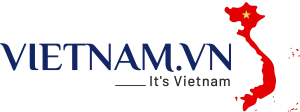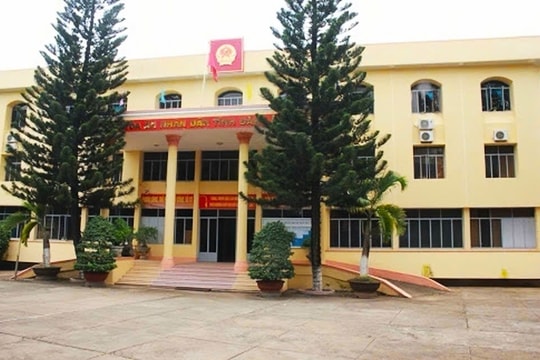The garment and textile industry is doing well in taking advantage of 17 active free trade agreements (FTAs), including new generation trade deals such as the UKVFTA, the Comprehensive and Progressive Agreement for Trans-Pacific Partnership (CPTPP) and the EU – Vietnam FTA (EVFTA), according to Vu Duc Giang, chairman of the Vietnam Textile and Apparel Association (Vitas).
However, there remains largely untapped potential.
The industry is poised to earn US$44 billion from exports this year, an increase of nearly 11.3% over last year – an impressive result in a world with complicated and unpredictable developments including escalating conflicts, volatile oil prices and transportation costs, and slow global trade recovery, he said. The industry has set a goal of exporting up to US$48 billion worth of products in 2025.
Aside from taking advantage of FTAs, the industry has effectively capitalised on the shift in export orders away from countries like China and Bangladesh, coupled with efforts to diversify markets and meet import market requirements, Giang said.
Vietnam’s garment and textile exports to the UK have seen improvements since the UKVFTA took effect in 2021 and have remained stable in the past few months, at US$76.7 million in August, US$52.5 million in September and US$61.9 million in October, customs statistics showed. The country earned more than US$622.8 million from garment and textile exports to the UK in the first 10 months of this year.
Still, Vietnam holds a modest share in the UK’s imported garment and textile market, which was estimated at more than US$20 billion per year.
Under the trade deal, the UK has removed 42.5% of the tariff lines starting in the beginning of 2021 and will eliminate the remaining tariffs in two, four or six years.
FTA ecosystem required
Ngo Chung Khanh, deputy director of the Multilateral Trade Policies Department under the Ministry of Industry and Trade, has pointed out five major problems in the garment and textile industry. One is the heavy dependence of imported raw materials, which is hindering the industry from taking further advantage of FTAs.
Another issue is that the industry mainly uses contract manufacturing, coupled with a shortage of capital, a lack of market information and failures in promoting brands for garment products.
The latest updates from the General Department of Customs showed that Vietnam imported US$22.82 billion worth of raw materials for the garment, textile and footwear industries in the first 10 months of this year, representing a strong increase of 44.2% over the same period last year.
Imported materials were mostly fabric worth a total of US$12.27 billion, up 14.7% over the same period last year.
Notably, the raw materials were mainly imported from China, accounting for 51% of imports.
According to the Ministry of Industry and Trade, domestic garment and textile producers are forced to import around 70% of raw materials, as domestic supply sources remain limited and are unable to meet the demand in terms of quality.
The heavy dependence on imported raw materials significantly affects the development of the garment and textile industry, especially in meeting rules of origin under FTAs, including the UKVFTA, for sustainable export expansion.
Pham Xuan Thuy, deputy director of the Tien Thang Garment Company in Da Nang city, said that Vietnamese-made fabric is not only expensive, but also fails to meet the quality requirements of foreign partners. Thus, domestic garment producers rely on imported sources to ensure quality and lower prices.
A report by the Ministry of Industry and Trade stated that the rules of origin under the UKVFTA for garments and textile products require two-stage criteria, meaning that the weaving stage and sewing stage for finished products must be carried out in Vietnam or the UK.
This means that the fabric used for cutting and sewing must originate from Vietnam or the UK – a significant challenge for the Vietnamese textile and garment industry, because the industry remains dependent on imported raw materials. To make up for this, Vietnam can take advantage of the accumulation principle regarding the origin of fabric, meaning the country can use fabric from the Republic of Korea, Japan, the EU or countries that have FTAs with the UK for cutting and sewing in Vietnam.
However, in the long term, the UKVFTA’s 'from fabric onwards' rules of origin combined with the CPTPP’s 'from yarn onwards' will require the establishment of a closed production chain, with a focus on ensuring self-sufficiency in raw materials so that the industry can better exploit FTAs, the report said.
According to Khanh, the Ministry of Industry and Trade is enhancing cooperation with relevant ministries, agencies and associations to establish an FTA ecosystem that will create conditions for the garment and textile industry to effectively use FTAs.
“Most importantly, the FTA ecosystem for the garment and textile industry will help connect garment producers with raw material suppliers,” Khanh said.
Deputy Director of the Da Nang Department of Industry and Trade Do Thi Quynh Tram said that the FTA ecosystem should be completed early and put into practice with the active participation of enterprises.
In the strategy for development of the garment, textile and footwear industry through 2030, one bold solution is to promote the development of the supporting industry for garment production.
The Ministry of Industry and Trade said that large-scale industrial zones specialising in garment and textile production will be developed, which will facilitate the establishment of a closed-loop supply chain for the industry.
The foundation of a raw material centre for the garment and textile industry should also be accelerated along with measures to ensure its efficient operation, Truong Van Can, Vitas’ general secretary, said.
To expand exports to the UK sustainably, garment producers also need to enhance production capacity and competitiveness by applying technology, automation, digital transformation and green production to meet market requirements.

























